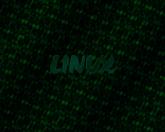

Linux System Administration Training – User Setup in Etc Skel Directory – Linux Commands Training
Posted by admin in Linux on 01 11th, 2011 | no responses
Clyde E. Boom asked:
The User Setup “Template” Files in the /etc/skel Directory Path
The skel (skeleton) directory below /etc contains directories and files that are created during the installation of a Linux distribution (usually).
The directories and files created in /etc/skel are dependent on the Linux distribution (version) you are using.
Linux Commands Training Tips: The Linux System Administration commands, concepts and user setup info covered here apply to ALL other Linux distributions, including: Ubuntu, Edubuntu, Kubuntu, Slackware, Debian, SUSE, openSUSE, Red Hat – and Fedora.
How Linux Users Get the Common “Template” Files in /etc/skel
Whenever you create a new Linux user, the files in skel are automatically copied to the home directory of a user. The skel directory commonly contains hidden Linux configuration files for the bash shell and also hidden directories that contain configuration files for some of the Linux software programs that are installed on the system.
For example, when you create a user named cwest, a directory named cwest is automatically created below /home.
In addition to this, any directories and files in /etc/skel are copied to /home/cwest. This process is used to provide users with the default directories and files that they require.
By default, for some Linux distributions, there are only hidden (configuration) directories and files in the skel directory and not “unhidden” directories and files.
For example, this directory usually contains the .bashrc file, which is used for the configuration of the bash shell and the .kde directory (if the KDE desktop is being used), which contains settings for the KDE desktop.
If you have other directories and files that you want all users to have, you can put them in the skel directory. In addition to configuration files, you can put data files, and even data directory structures that users will commonly need in this directory.
Caffeinated Content for WordPress
The User Setup “Template” Files in the /etc/skel Directory Path
The skel (skeleton) directory below /etc contains directories and files that are created during the installation of a Linux distribution (usually).
The directories and files created in /etc/skel are dependent on the Linux distribution (version) you are using.
Linux Commands Training Tips: The Linux System Administration commands, concepts and user setup info covered here apply to ALL other Linux distributions, including: Ubuntu, Edubuntu, Kubuntu, Slackware, Debian, SUSE, openSUSE, Red Hat – and Fedora.
How Linux Users Get the Common “Template” Files in /etc/skel
Whenever you create a new Linux user, the files in skel are automatically copied to the home directory of a user. The skel directory commonly contains hidden Linux configuration files for the bash shell and also hidden directories that contain configuration files for some of the Linux software programs that are installed on the system.
For example, when you create a user named cwest, a directory named cwest is automatically created below /home.
In addition to this, any directories and files in /etc/skel are copied to /home/cwest. This process is used to provide users with the default directories and files that they require.
By default, for some Linux distributions, there are only hidden (configuration) directories and files in the skel directory and not “unhidden” directories and files.
For example, this directory usually contains the .bashrc file, which is used for the configuration of the bash shell and the .kde directory (if the KDE desktop is being used), which contains settings for the KDE desktop.
If you have other directories and files that you want all users to have, you can put them in the skel directory. In addition to configuration files, you can put data files, and even data directory structures that users will commonly need in this directory.
Caffeinated Content for WordPress
Related Posts

No Comments »
No comments yet.
RSS feed for comments on this post. TrackBack URL












